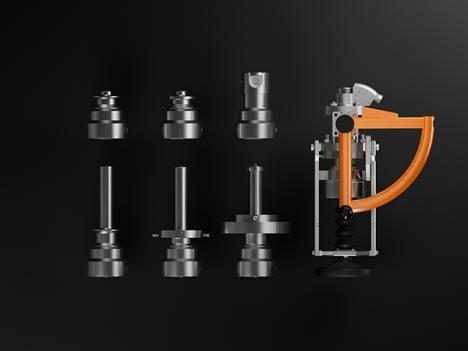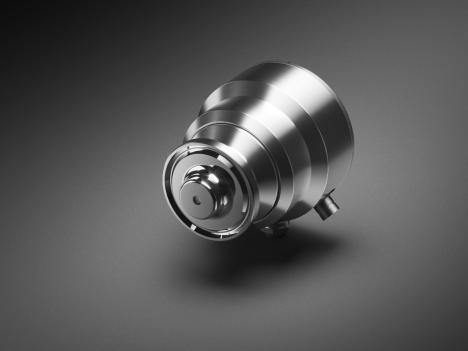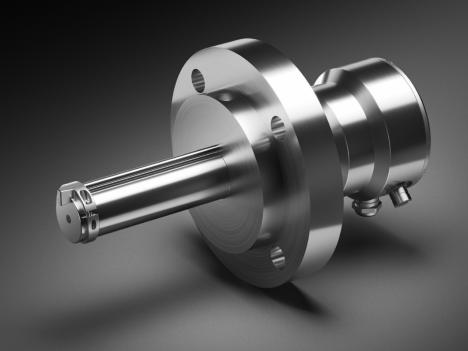Optimizing environmental impact with wet scrubbing technology
Industrial processes often have serious environmental costs, emitting exhaust gases containing harmful pollutants such as sulfur, nitrogen, and carbon compounds. These emissions contribute significantly to air pollution. One effective method for removing these pollutants from exhaust gases is wet scrubbing, also known as flue gas desulfurization (FGD). In this article, Dave Lobach of Rocky Mountain Instrumentation explains how the Vaisala Polaris™ process refractometer can optimize wet scrubbing applications.
Wet scrubbers use water or other liquids as solvents to remove inorganic contaminants from exhaust gas. Typically, contaminated gas is passed through a container filled with water, which absorbs the contaminants, allowing clean gas to exit the scrubber.
An effective wet scrubber ensures that most of the emissions leaving the smokestack are moisture. By adjusting the chemical composition of the absorbing solutions, the scrubber can be tailored to target specific pollutants with varying charges, using liquids that effectively bind and remove them. Caustic solutions such as sodium hydroxide (NaOH) are commonly used for controlling acid gases like hydrogen chloride (HCl) and sulfur dioxide (SO2), while sodium carbonate (Na2CO3) and calcium hydroxide (slaked lime, Ca[OH]2) are also effective. Refractometers monitor the concentration of solutions in the scrubber, providing output values like Total Dissolved Solids (TDS) or liquid density for precise control.
There are a lot of harmful chemicals that can be removed using wet scrubbers. Sulfur dioxide (SO2) was once a major contributor to acid rain, affecting ecosystems, corroding buildings, and harming human health. Nitrogen oxides (NOx), by-products of coal combustion, contribute to smog formation and ozone depletion, exacerbating respiratory issues and affecting air quality. Carbon dioxide (CO2) and particulates, along with SO2 and NOx, contribute to the greenhouse effect.
Wet scrubbers work by passing exhaust gases through a scrubbing liquid, often a slurry of water and chemicals, which absorbs pollutants including SO2, NOx, and particulates. The scrubbing liquid neutralizes acidic gases, converting SO2 into sulfate ions, preventing it from escaping into the atmosphere. Particulates and neutralized gases are collected in the liquid, forming a slurry that is treated or disposed of.
Beyond emission control, wet scrubbers offer the additional benefit of heat recovery, extracting heat from the flue gas to improve overall plant efficiency. Maintaining the right alkalinity in scrubber modules is critical; excessive alkalinity wastes expensive reagents, while insufficient alkalinity impairs SO2 removal and may cause the plant to exceed environmental permit levels.
Operators rely on pH monitoring and nuclear densitometers to ensure optimal performance, guiding reagent feed rates and preventing deviations. Regular grab-sample pH analyses verify the accuracy of in-line probes and monitors. Precipitating carbonates (scaling) necessitate high maintenance efforts, but inline process refractometers that do not drift offer several advantages over traditional pH meters and manual sampling.
Continuous alkalinity measurement
Refractometers provide real-time total alkalinity (TA) data for scrubber reagents, enhancing operational efficiency. They measure the refractive index of the scrubbing liquid, which correlates with TA levels to ensure the scrubbing solution maintains optimal chemical balance. Continuous monitoring of TA allows for precise adjustments to the reagent composition, maximizing contaminant absorption and preventing reagent wastage. This real-time data ensures the wet scrubber remains effective, optimizing pollutant removal, reducing operational costs, and ensuring compliance with environmental regulations.
Monitoring TA data with a refractometer optimizes wet scrubber performance by providing continuous, accurate measurements of the scrubbing solution's chemical balance. Maintaining optimal TA keeps the scrubbing solution effective in neutralizing and absorbing acidic pollutants. Real-time monitoring allows for precise adjustments to the scrubbing solution, ensuring it retains the correct alkalinity to effectively bind and remove contaminants. Real-time measurements allow for more stable process control which in turn minimizes maintenance expenses. Proper TA levels prevent the solution from becoming too acidic or too basic, which could reduce scrubber efficiency. This ensures consistent pollutant removal at optimal rates, enhancing overall scrubber efficiency, reducing reagent waste, and ensuring compliance with environmental standards.
Refractive index as an early warning system
A properly installed refractometer can act as an early warning system for mechanical failure by continuously monitoring TA and providing real-time data on the scrubbing solution's condition. Sudden changes or anomalies in TA levels can indicate potential issues within the scrubber system, such as:
- Leak Detection: A drop in TA might indicate a leak in the scrubber system, allowing the scrubbing solution to escape and dilute.
- Blockages: Consistently high TA levels might suggest blockages in the scrubber nozzles or pipes, preventing proper flow and mixing of the scrubbing solution.
- Reagent Depletion: Gradual changes in TA could signal that the reagent supply is running low or that the replenishment system is malfunctioning.
- Pump Failures: Fluctuations in TA readings can point to issues with the pumps responsible for circulating the scrubbing solution, leading to uneven distribution and ineffective pollutant removal.
- Sensor Malfunction: Irregularities or erratic readings can highlight potential problems with the refractometer itself or other associated sensors, prompting timely maintenance and calibration.
By alerting operators to potential issues before they escalate into significant mechanical failures, the refractometer helps ensure continuous, efficient operation of the wet scrubber, minimizing downtime, repair costs and avoiding environmental compliance fines.
Conclusion
In summary, wet scrubbers are indispensable tools for reducing harmful emissions. Their impact extends beyond environmental protection, influencing overall plant efficiency and compliance with regulatory standards. As we strive for cleaner energy, wet scrubbers remain at the forefront of emission control strategies, and advanced tools like the Vaisala Polaris™ process refractometer play a critical role in optimizing their performance.



